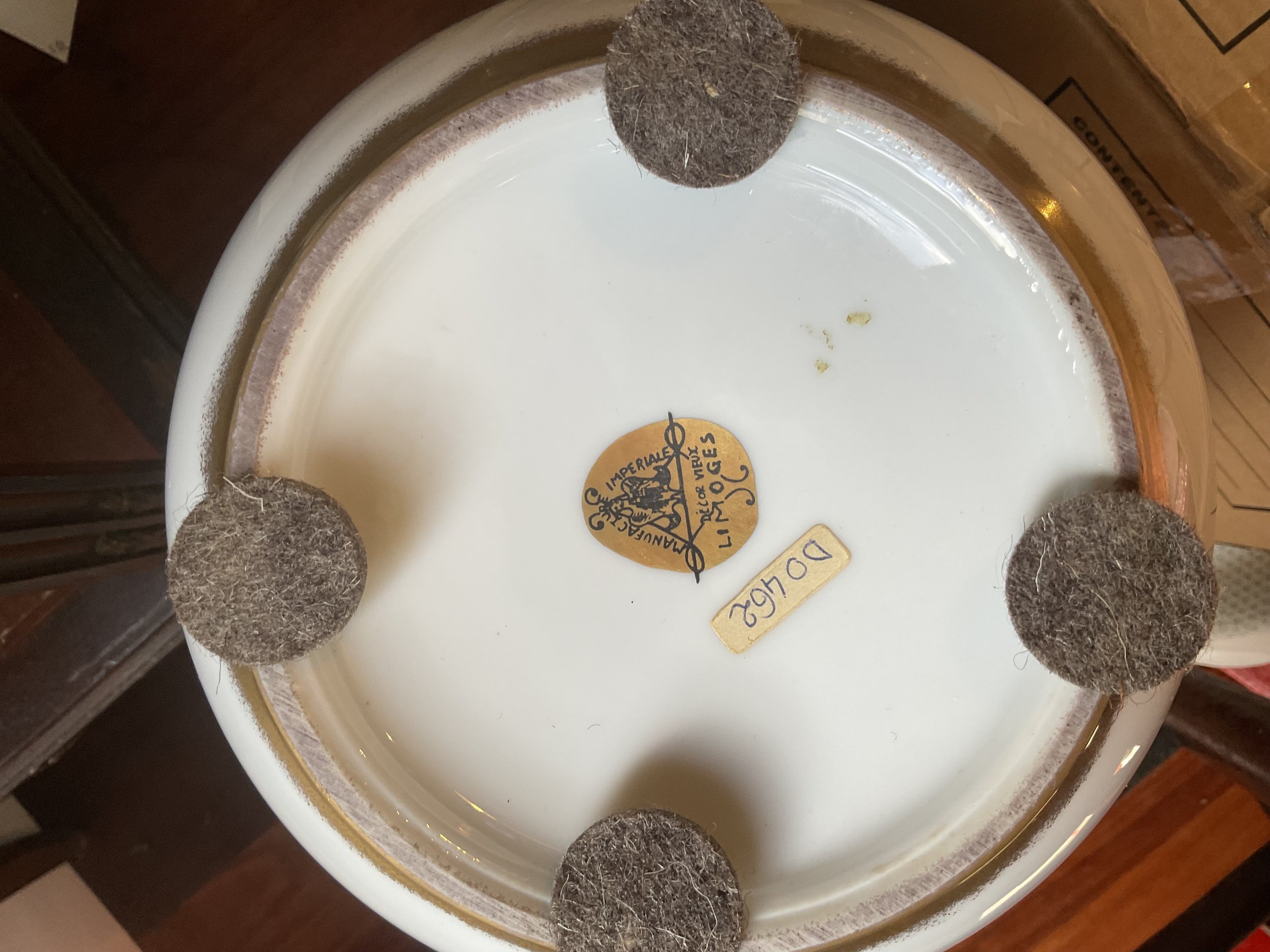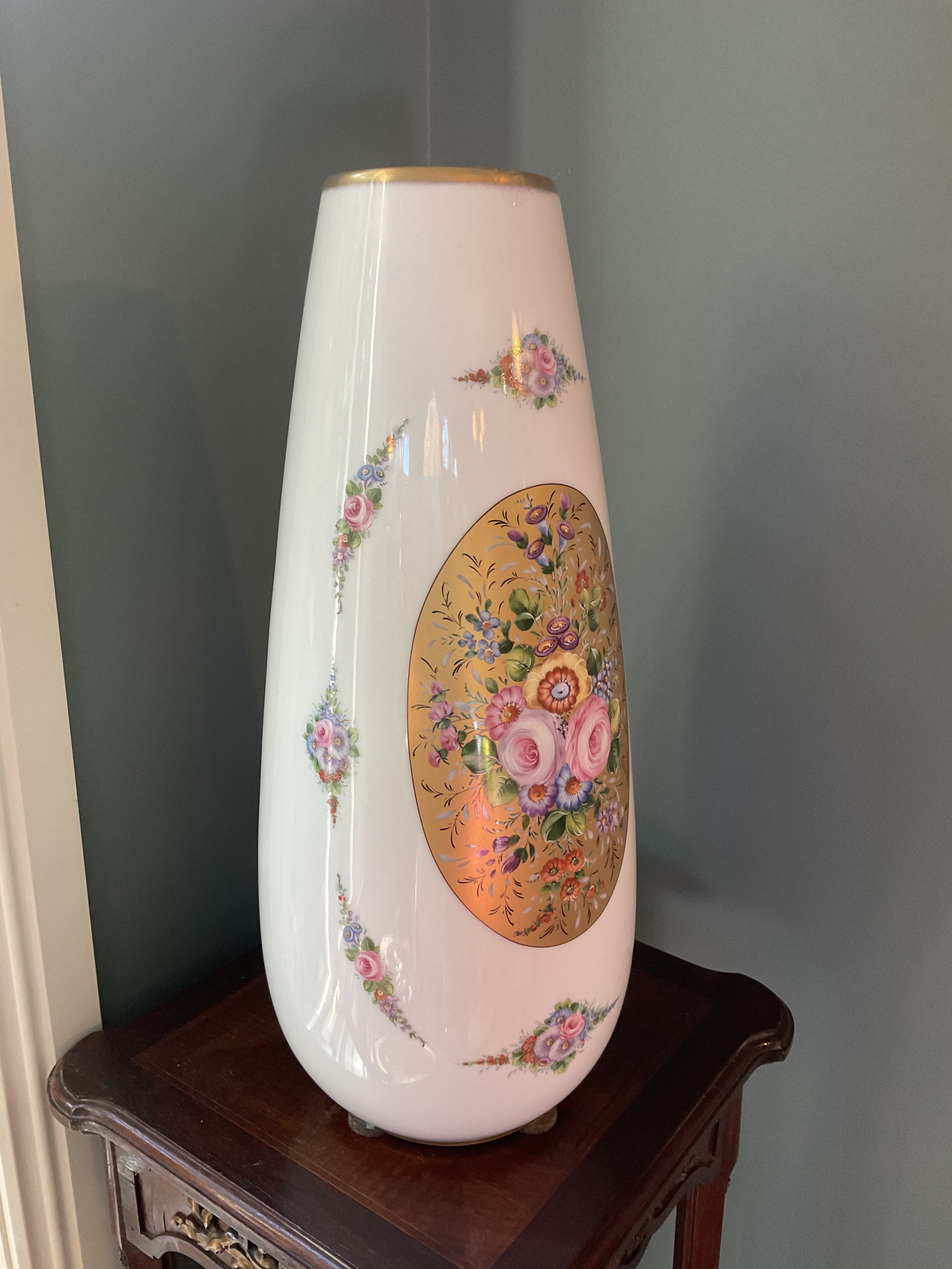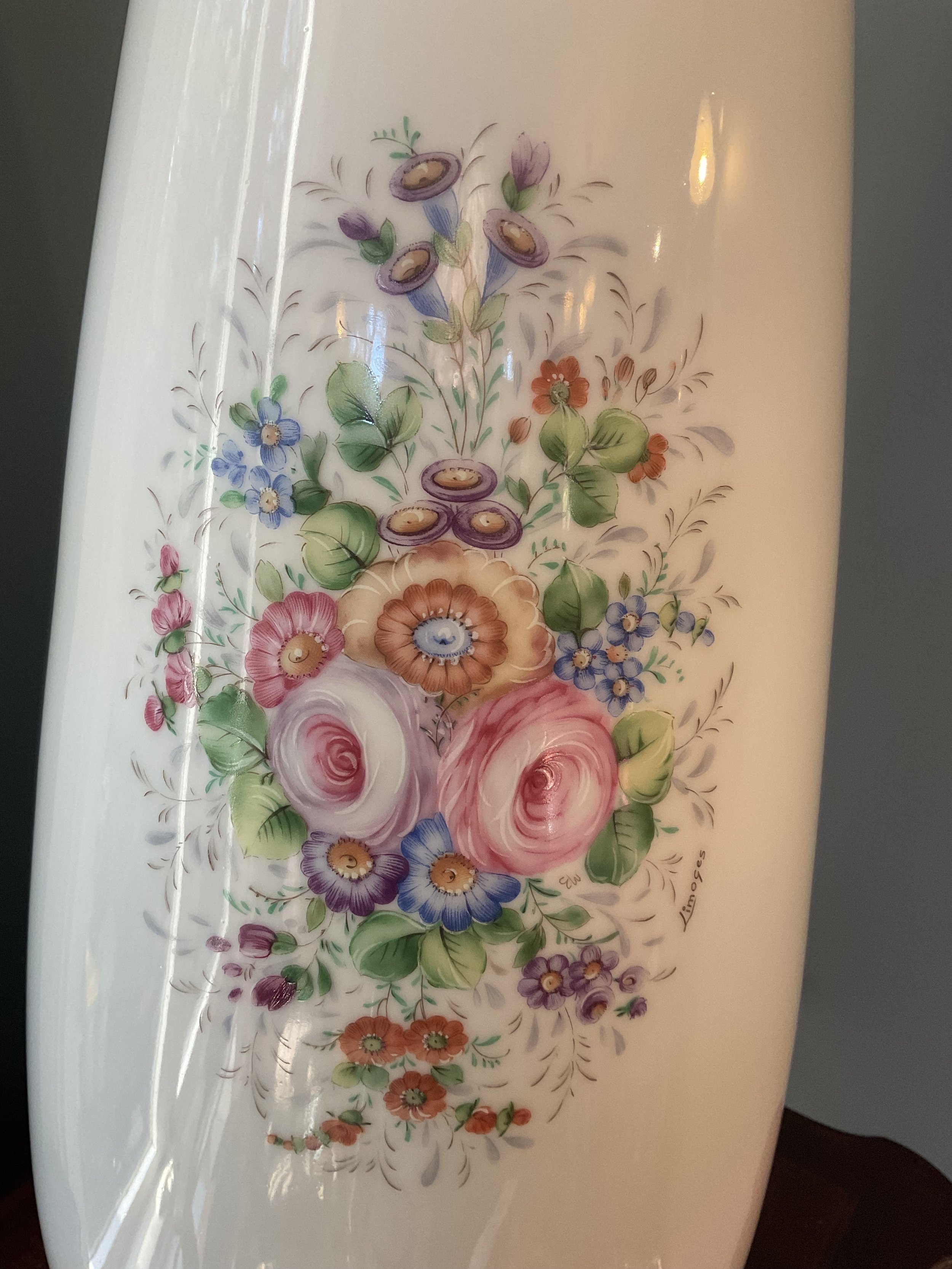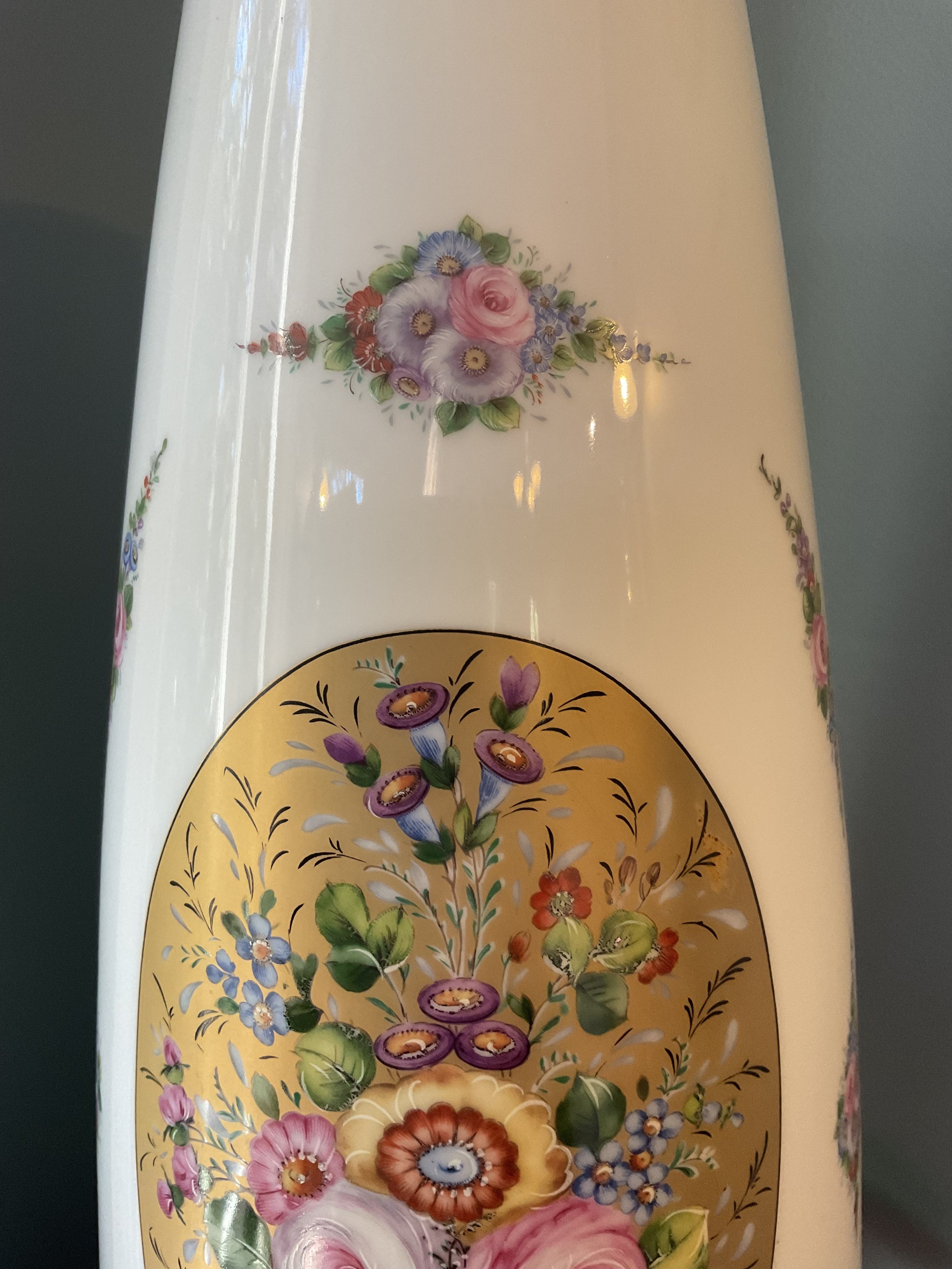 Image 1 of 8
Image 1 of 8

 Image 2 of 8
Image 2 of 8

 Image 3 of 8
Image 3 of 8

 Image 4 of 8
Image 4 of 8

 Image 5 of 8
Image 5 of 8

 Image 6 of 8
Image 6 of 8

 Image 7 of 8
Image 7 of 8

 Image 8 of 8
Image 8 of 8









Large Limoges Vieux Paris Porcelain Vase
This large tapering vase is from Limoges Vieux Paris Porcelain. It has a stunning ground gold oval cartouche on the front. It is decorated with a profusion of coloured flowers enclosed by a broken wreath of garlands. It has a floral posy on the reverse.
Limoges porcelain is a hard paste porcelain produced by factories in and around Limoges, France. The production of Limoges porcelain began in the late 18th century. By about 1830, Limoges had replaced Paris as the main centre for private porcelain factories. Limoges has retained this position to the present day. Revered for its beauty and craftsmanship, kaolin Limoges clay is translucent, durable, non-porous and pure white. Kaolin (also known as China clay) is a hydrated aluminium silicate crystalline mineral formed over many millions of years. European efforts to discover the secrets of making hard paste porcelain had lasted for centuries. It was accidently discovered around 1776 at Saint- Yrieix-la-Perche, close to Limoges. A chemist’s wife, who was out foraging for ingredients, thought the white substance would make a good replacement for soap, which could be used to wash and bleach linen. Some well-known makers of Limoges include Bernardaud, J.L. Coquet, Raynaud, Haviland, Jaune de Chrome and Albert Pinto.
On the underside it is marked Limoges, black on gold Vieux and Limoges. This large porcelain vase stands 46 cms in height.
This large tapering vase is from Limoges Vieux Paris Porcelain. It has a stunning ground gold oval cartouche on the front. It is decorated with a profusion of coloured flowers enclosed by a broken wreath of garlands. It has a floral posy on the reverse.
Limoges porcelain is a hard paste porcelain produced by factories in and around Limoges, France. The production of Limoges porcelain began in the late 18th century. By about 1830, Limoges had replaced Paris as the main centre for private porcelain factories. Limoges has retained this position to the present day. Revered for its beauty and craftsmanship, kaolin Limoges clay is translucent, durable, non-porous and pure white. Kaolin (also known as China clay) is a hydrated aluminium silicate crystalline mineral formed over many millions of years. European efforts to discover the secrets of making hard paste porcelain had lasted for centuries. It was accidently discovered around 1776 at Saint- Yrieix-la-Perche, close to Limoges. A chemist’s wife, who was out foraging for ingredients, thought the white substance would make a good replacement for soap, which could be used to wash and bleach linen. Some well-known makers of Limoges include Bernardaud, J.L. Coquet, Raynaud, Haviland, Jaune de Chrome and Albert Pinto.
On the underside it is marked Limoges, black on gold Vieux and Limoges. This large porcelain vase stands 46 cms in height.
This large tapering vase is from Limoges Vieux Paris Porcelain. It has a stunning ground gold oval cartouche on the front. It is decorated with a profusion of coloured flowers enclosed by a broken wreath of garlands. It has a floral posy on the reverse.
Limoges porcelain is a hard paste porcelain produced by factories in and around Limoges, France. The production of Limoges porcelain began in the late 18th century. By about 1830, Limoges had replaced Paris as the main centre for private porcelain factories. Limoges has retained this position to the present day. Revered for its beauty and craftsmanship, kaolin Limoges clay is translucent, durable, non-porous and pure white. Kaolin (also known as China clay) is a hydrated aluminium silicate crystalline mineral formed over many millions of years. European efforts to discover the secrets of making hard paste porcelain had lasted for centuries. It was accidently discovered around 1776 at Saint- Yrieix-la-Perche, close to Limoges. A chemist’s wife, who was out foraging for ingredients, thought the white substance would make a good replacement for soap, which could be used to wash and bleach linen. Some well-known makers of Limoges include Bernardaud, J.L. Coquet, Raynaud, Haviland, Jaune de Chrome and Albert Pinto.
On the underside it is marked Limoges, black on gold Vieux and Limoges. This large porcelain vase stands 46 cms in height.
Not suitable for delivery via Australia Post. Collection by appointment. Please make contact if you would like to arrange another type of delivery. Free delivery to some Melbourne metropolitan areas can be arranged.
























